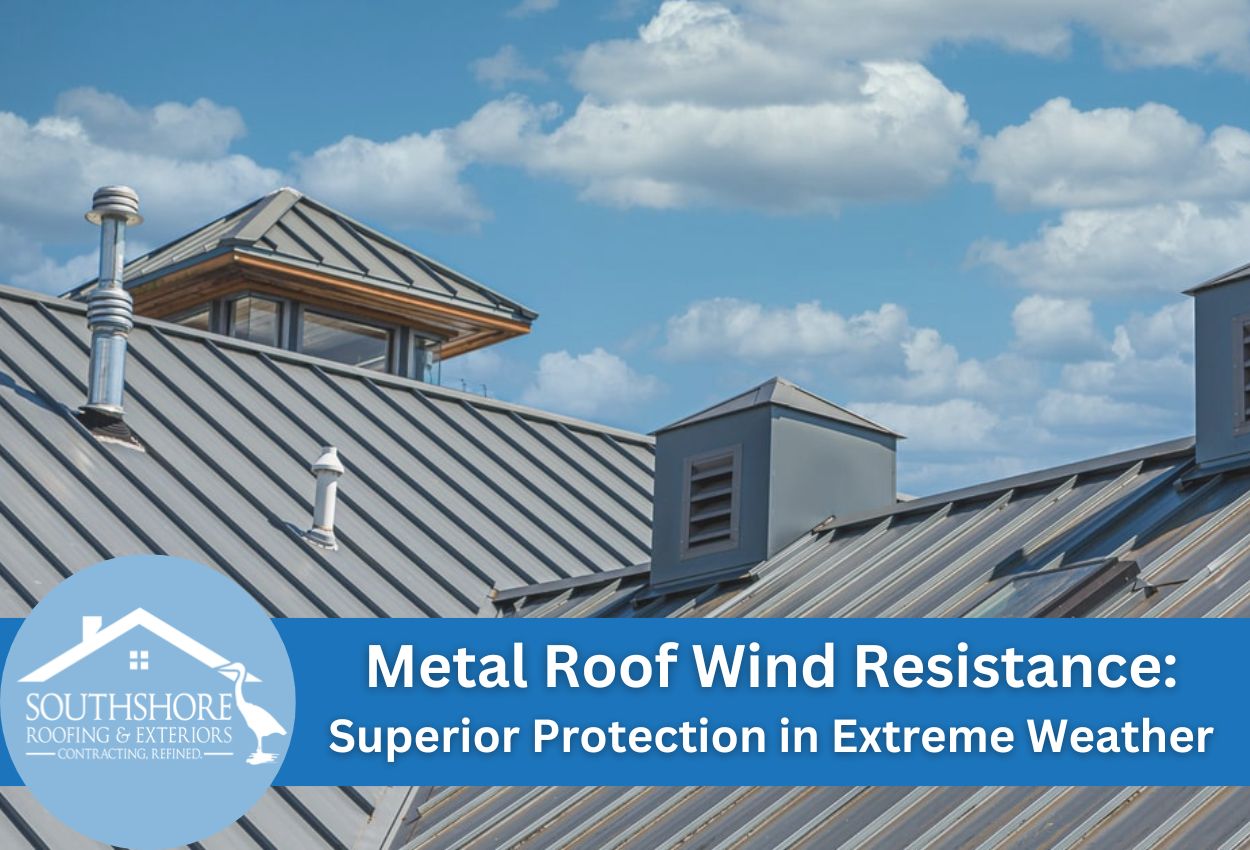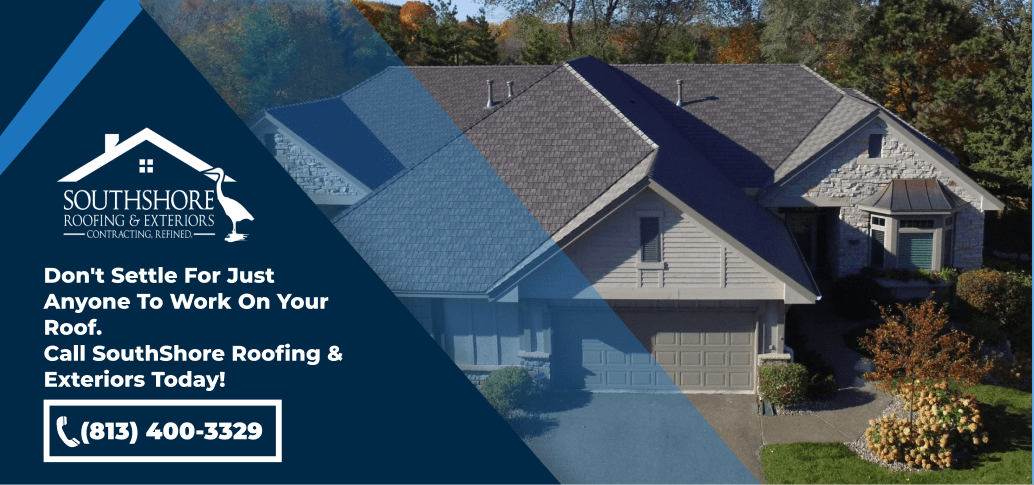For Tampa homeowners, hurricane season brings legitimate concerns about how well a roof can withstand powerful winds and driving rain. Metal roofs are an exceptional choice for wind resistance, offering superior protection compared to traditional roofing materials. With wind speeds that can exceed 150 mph during severe storms, having a roof specifically engineered to handle these extreme conditions is non-negotiable.
Metal roofing systems are designed with wind uplift ratings that far exceed those of asphalt shingles, clay tiles, and other conventional materials. The interlocking panel design creates a unified surface that resists wind gusts, while the secure fastening methods prevent the lifting that often damages or destroys other roofing types during storms.
What makes metal roofs a top choice for Florida residents is their proven track record during hurricanes. Many metal roof systems carry wind certifications for speeds up to 140 to 180 mph, well beyond the requirements for even coastal high-wind zones. This level of hurricane resistance provides Tampa homeowners with peace of mind when severe weather approaches.
Metal roof installation techniques used by experienced Tampa roofing contractors further enhance this natural resistance, creating a complete storm protection system that stands up to Florida’s most challenging weather conditions.
Understanding Wind Uplift and How Metal Roofs Combat It
Wind uplift is a powerful force that occurs when high-speed winds create pressure differences between the interior and exterior of a building. In the Tampa Bay area, where hurricanes and severe storms are common, this phenomenon can literally tear roofs from homes. As wind moves across a roof surface, it creates a vacuum effect that pulls upward (similar to how airplane wings generate lift) placing immense stress on roofing materials and fastening systems.
Metal roofs excel at resisting these destructive forces through several engineered advantages. First, their interlocking panel design distributes wind pressure across the entire roof system rather than concentrating it in vulnerable spots. The continuous panels create fewer seams and edges where wind can penetrate and gain leverage.
The attachment methods also contribute to metal roofing wind uplift ratings. Unlike asphalt shingles that rely on overlapping layers and adhesives, metal panels connect directly to the roof deck with specialized fasteners designed to withstand high-tension loads. Many systems feature concealed clips that allow the metal to expand and contract while maintaining secure attachment.
The weight-to-strength ratio of metal roofs provides another advantage. Though lighter than materials like tile, metal’s tensile strength creates exceptional resistance to deformation under pressure, a key factor for hurricane-resistant metal roofing systems across Tampa.
Metal Roof Wind Ratings Explained: What Tampa Homeowners Need to Know
Understanding metal roof wind resistance ratings is crucial for Tampa homeowners facing Florida’s hurricane seasons. These ratings aren’t just numbers, they represent tested performance standards that determine how well your roof will protect your home when severe weather strikes. Several organizations establish these important benchmarks for safety and reliability.
The American Society for Testing and Materials (ASTM) provides rigorous testing that measure a metal roof’s ability to withstand wind uplift forces. UL (Underwriters Laboratories) ratings offer another layer of certification, with UL 580 tests evaluating how roofing systems perform under simulated hurricane conditions. Most importantly for Tampa residents, the Florida Building Code establishes specific high-velocity hurricane zone (HVHZ) requirements that exceed national standards.
When selecting a metal roof, look for products with Miami-Dade County approvals, which are some of the strictest wind certifications for metal roofs in the country. Standing seam metal roofs typically achieve the highest wind resistance ratings, often certified for winds up to 150 to 180 mph when properly installed.
Local Tampa roofing professionals can help interpret these ratings based on your specific location’s wind zone classification. Remember that proper installation by experienced contractors is equally important. Even the highest-rated materials can fail if the installation doesn’t follow manufacturer specifications.
Installation Techniques for Maximum Wind Resistance
Even the highest-rated metal roofing system will fail during severe weather if installed incorrectly. The difference between a roof that survives hurricane-force winds and one that doesn’t often comes down to installation quality. For Tampa homeowners, understanding these installation factors is essential to maximizing their metal roof’s wind resistance.
Fastening systems form the foundation of a wind-resistant installation. This includes using the correct type, size, and number of fasteners per square foot based on local wind zone requirements. In high-velocity wind zones common throughout Tampa Bay, installers must use corrosion-resistant fasteners with proper pullout strength and spacing patterns specifically engineered for hurricane conditions.
Panel design and attachment methods significantly impact performance. Standing seam metal roofs with concealed fastener systems generally provide superior wind uplift resistance compared to exposed fastener panels. These systems allow for thermal movement while maintaining their strength during wind events.
Professional installation by qualified contractors familiar with Florida’s building codes is non-negotiable. Experienced Tampa metal roofing specialists understand critical details like flashing techniques, correct overlap measurements, and appropriate sealant application that prevent wind-driven rain infiltration.
Metal roof storm protection begins with professional installation that follows manufacturer specifications. By working with certified contractors who understand metal roofing wind uplift ratings and proper high wind metal roof installation methods, Tampa homeowners can ensure their hurricane-resistant metal roofing system performs as expected when severe weather strikes.
Metal Roofing Systems Engineered for Hurricanes
When it comes to protecting Tampa homes from hurricane-force winds, not all metal roofing systems are created equal. Specialized metal roofs designed specifically for hurricane environments offer enhanced structural integrity that standard roofing systems simply cannot match. These engineered systems integrate advanced design features that work together to create a unified defensive barrier against extreme weather.
Standing seam metal roofs represent the gold standard for wind resistance in coastal regions. Its distinctive raised seams create a continuous interlocking system that prevents wind from getting beneath panels. The concealed fastener design eliminates vulnerable points where water and wind could compromise the roof during severe storms.
Interlocking metal panels offer another highly effective option for Tampa homeowners. These systems feature specially designed edges that connect panels together in multiple dimensions, creating a unified surface that distributes wind pressure evenly across the entire roof rather than allowing it to concentrate in vulnerable areas.
The engineering behind hurricane-resistant metal roofing systems extends to every component. From the gauge of the metal to the spacing of fasteners and the design of trim pieces, each element serves a specific purpose in the system’s overall wind resistance capabilities. For Tampa residents, this engineering provides reliable protection that exceeds building code requirements for our high-velocity hurricane zone.
Certification and Compliance: Meeting Florida’s Wind Requirements
Florida’s building codes, especially in coastal areas like Tampa, are among the nation’s most demanding when it comes to wind resistance. These requirements weren’t created randomly, they’re the result of lessons learned from devastating hurricanes that have impacted our state. For homeowners considering a metal roof, understanding these certification standards ensures your investment will provide the protection you need.
Florida Building Code requires roofing systems to withstand specific wind speeds based on your location. In Tampa and surrounding areas, most properties fall within Wind Zone 3 or 4, requiring roofs to resist winds of 130 to 150 mph. Quality metal roofing manufacturers rigorously test their products in specialized facilities that simulate hurricane conditions, including wind-driven rain and pressure cycling that mimics real-world storm patterns.
To verify your metal roof meets code requirements, look for products with Florida Product Approval numbers or Miami-Dade County certification. These credentials confirm the roofing system has been tested specifically for Florida’s climate challenges. Your roofing contractor should provide documentation showing your specific metal roofing system’s wind uplift ratings and certification details.
Insurance companies often offer discounts for certified metal roofs, recognizing their superior wind resistance. Working with a licensed Tampa roofing contractor ensures your installation will be fully compliant with local building codes and properly documented for both permit approval and insurance verification.
Long-term Benefits of Wind-Resistant Metal Roofs in Tampa
Investing in a wind-resistant metal roof delivers substantial long-term advantages for Tampa homeowners beyond just storm protection. While the initial cost may be higher than traditional roofing materials, the financial benefits accumulate over time. Many insurance companies offer premium discounts ranging from 5% to 35% for homes with properly rated and certified metal roofing systems, recognizing their superior ability to withstand hurricane-force winds and reduce claim likelihood.
The overall property protection cannot be overstated. During severe storms, homes with hurricane-resistant metal roofing systems typically experience minimal damage, preventing expensive interior water damage that often exceeds the value of the roof itself. This protective capability maintains your property value while homes with lesser roofing systems may require extensive repairs after major storms.
Perhaps the biggest benefit is peace of mind. Tampa residents with wind-certified metal roofs can relax during hurricane seasons knowing their homes have the best possible protection. This benefit extends year after year throughout the 40 to 50-year lifespan of a quality metal roof.
To maintain these wind resistance capabilities, schedule professional inspections after major storms to check for loosened fasteners or minor damage. Annual maintenance should include clearing debris from valleys and gutters, checking sealants at flashing points, and confirming that expansion joints remain functional. With the right care, your metal roof will provide decades of superior wind protection for your Tampa home.
Superior Metal Roofing Services for Tampa Bay Homeowners
Don’t wait until the next hurricane season threatens your Tampa home. Invest in a wind-resistant metal roofing system that provides unmatched protection against Florida’s extreme weather conditions. SouthShore Roofing & Exteriors specializes in installing hurricane-rated metal roofing systems engineered specifically for our challenging Gulf Coast climate.
Our certified installers understand Tampa’s strict wind code requirements and ensure every fastening system, panel, and component is properly secured to maximize wind resistance. Why risk your home’s safety with substandard materials when you can have peace of mind for decades to come?
Contact SouthShore Roofing & Exteriors today at (813) 400-3329 to schedule your free metal roofing consultation and protect your home against Florida’s unpredictable storms.




